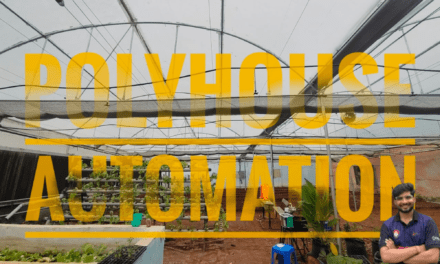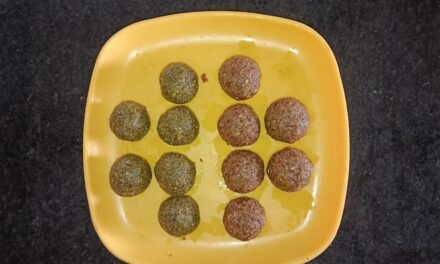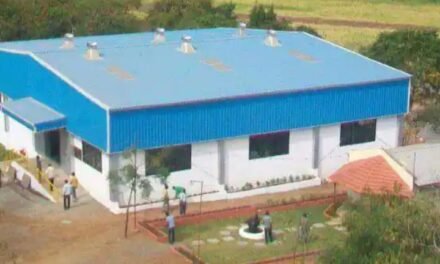
Introduction:
COD (Chemical Oxygen Demand) is an indicative measure of oxygen that can be consumed by reactions in a measured solution. This test can easily quantify the amount of organics in water.so, digesters are mostly considered for carrying out the COD test.
Problem faced in previous model :
- Limited no. of test carried i.e. only 4 test at a time.
- Heat loss.
- Oil over the outer surface of test tube
Solution to that problems :
- Limited no. of test carried
Increase the size of container (cylindrical, rectangular) and big enough to occupy 12 test-tube
2.Heat loss
Provide insulation e.g. glass wool, spray foam, foam sheet
3.Oil over outer surface of test tube.
Provide a rubber sheet between the gasket and container.
Provide a separate container carrying hot soapy water + salt.
Objectives :-
To design a COD digester for carrying out at most 12 cod test.
Materials :
Materials required for making digester and the stand on which it resides
- MS sheet
- Stainless steel circular storing unit
- Square tube of size 20x 20 x 6 mm
- G I sheet
Materials required for electronic circuit and heating purpose
- TC513 (temperature controller)
- 4 pole contactor
- Pt-100 RTD
- Heater( 3kw)
- Wires( 3 core wire and single core wire)
Materials used for insulation and sealing purpose
- Anabonde
- Glass wool
- Non asbestoses gasket
Solid works Sketches :
- Designing of Digester

Drawing and solidworks model
2. cod digester:
Methodology
- Shape selection:
The shape of the digester is a crucial part of a design. The Cod digesters which are available in the market are generally of rectangular shape (basically a rectangular solid block made up of aluminium.). But for designing a rectangular container where oil is used as a heat transfer medium the problems faced were unequal heating and stress developed at corners of a container so to avoid these problems in the COD process, cylinder was preferred.
- Selection of type of oil :
The oil acts as medium through which the heat is to be supplied. The selection of oil is based on the specific heat of oil. The oils considered for acting as a medium were vegetable oil and paraffin oil; vegetable oil with specific heat value of 1.67Kj/Kg K whereas paraffin oil with specific heat value of 2.13Kj/Kg K. Since, lower the specific heat value of oil the more easily changes its temperature, and also that paraffin oil has less thermal conductivity and high flash point whereas thermal conductivity is more , flash point is less in case of vegetable oil so vegetable oil is considered.
The quantity of oil required will be equal to volume of vessel – volume of test tube
Quantity of oil required to fill in the digester = volume
=volume of cylinder without considering the test tube ( bottom portion)+ volume of cylinder considering the test tube( upper portion)
= { (3.14/4)* d2 (bottom portion of cylinder)h(bottom portion of cylinder) } + { (3.14/4)* d2 (cylinder)h(cylinder) – (3.14/4)* d2 (test tube)h(test tube) }
{ d2 (cylinder)h(cylinder) – d2
= 0.0284 m3= 28.4 litres
Calculations of heat required and heat loss: The heat required to raise the temperature of oil up to 150 degree from the ambient temperature is necessary for carrying these Cod test, for the economic selection of heater and insulation, the heat required and heat loss through the surface area of cylinder is important.
2.1) Heat Required
According to heat required in digester, the value of heater required was decided.
Table 1 Heat required in digester
| HEAT REQUIRED | ||||
| Volume | Mass = Density * Volume | Mass | Q = M. cp. DT = (Mass)*(Specific heat of Vegetable oil)*(Rise in Temperature) | Heat required (Q) |
| 0.0284 m3 | 930(kg/m3)* 0.0284 (m3) | 26.412 kg | 26.412(kg)*1.67(Kj/KgK)*125 | =5513.5Kj =5513.3 KWs |
Heater required and time required reaching the temperature
Consider the heating coil of 1.1KW
Time required to reach a temperature of 1500c =5513.3 (Kw.s)/ 1.1 kW = 5011.8 seconds i.e. 1.46 hr
5513.3 KWs i.e 5513.5 KJ is the heat required, so to fulfil the required heat for reaching oil upto 150 degree, so as the process being completed, heater value of 3 Kw be economical for heating oil at such temperature.
Now considering 3KW heater,
Time required to reach a temperature of 1500c =5513.3 (Kw.s)/ 3Kw
=1837.6seconds i.e. 30 minutes
2.2) Heat loss through the surface of vessel and selection of insulation thickness for minimise it.
Heat loss during the process
Q/dt =A*dt/((lms/kms) + (lss/kss) + (li/ki))
For minimum heat loss through surface area thickness of insulation i.e. glass wool was selected on the basis of its critical thickness. The thickness of glass wool is assumed .The values of thickness and thermal conductivity of each material is given in table:
Table 2 The value of thickness and thermal conductivity of each materials
| Thickness (l) | Thermal conductivity(k) | |
| Milled steel | 0.0008 m = 0.8 mm | 51 |
| Stainless steel | 0.0008 m = 0.8 mm | 16.2 |
| Glass wool | 0.025 m = 2.5 mm | 0.04 |
Surface Area of cylinder =3.14*d*h+2*3.14*r2
=3.14((0.33*0.35) +2*(0.33/2)2)
=0.899 m3
dQ/dt =0.899*125/(0.0008/51)+ (0.0008/16.2)+ (0.025/0.04)
dQ/dt =177.98 W =0.17798 KW
5.1.3) The overall running cost of cod digester per batch
Cost of electricity for running heater about 0.5 hr
= 3*0.5*7.83
= Rs.11.74
Cost of electricity for retaining heat lost during the process:
= 0.17798*2*7.83 = Rs.3.27
Total cost = Rs.11.74 + Rs.3.27 = Rs.15.01 / batch
- The arrangement of the test tube:
There are 12 test tubes which are arranged into two concentric circles pattern, each of concentric circles containing 6 test tubes. The test tubes are so arranged that the distance between two adjacent test tubes is equal. They are equally spaced so that there is equal heating on each and modification is to be made to test tube arrangement plate. The diameter of hole for test tube to be placed was kept about 50 mm i.e. 10 mm greater that the test tube diameter for attachment of rubber gasket.
- Rubber gasket for plate:
A circular rubber sheet is to be attached to the plate so that the oil over test tube is removed and it remains back over rims of rubber sheet. The rubber sheet is cut into circle of outer diameter of 70 cm and inner diameter of 40 cm. This is purposely kept because then the test tube will reside on rubber sheet having diameter equal to test tube diameter. Due to this, while removing the test tube the oil doesn’t get over the outer surface of test tube and this rubber sheet act as hydraulic seal. For selection of rubber gasket, the rubber must sustain the temperature of around 150 degree and also hold the test tube proper so that while removing the test tube it must act as hydraulic seal.
- Insulation:
To minimise the heat loss insulation must be provided. It is another crucial part of the design. There are various types of insulations like glass wool, polyurethane foam and spray foam. All these insulations are classified according to their thermal properties like temperature, amongst this glass wool is preferred due to its low cost and temperature range because the temperature inside the digester is about 1500C and it has a range of about 00C to 2500C which would be affordable for the COD Digester.

Figure 3.3 Glass wool filled in outer shell
- Material selection of Digester:
Raw material has direct impact on the price of finished product. The outer vessel is made up of milled steel because it is readily available and also less costly and easily weld able than aluminium. The material selection of inner vessel was made on property of thermal conductivity and corrosion free. Because there was need of such material which would not transfer heat quickly to the surrounding initially reducing the heat loss also being non reactive with oil present inside. Stainless steel was chosen over aluminium because it had high thermal conductivity.
- Temperature control unit:
In this cod test, the test tube is to be heated up to 150 0 C for 2 hrs to complete the process so, for temperature controller circuit will be needed so as to heater gives only needed heat for 2 hrs to maintain the given temperature. The temperature control which will be needed for carrying out these tests will be TC513, a temperature controller device which not only indicates but also control the heater,
Table 3 Specification of TC 513
| SPECIFICATION OF TC 513 | |
| Display | Single Display,7 segment LED |
| Operating temperature | 0 to 50 degree |
| Humidity | 95 % RH |
| Input | Thermocouple (J,K,T,R,S) / RTD(Pt 100) |
| Supply Voltage | 85 to 270 V |
There were various temperature sensors available , Pt 100 type rtd was chosen on basis of its temperature range of -150 to 850 degree and its accuracy of 0.1 % of FS (+ 10 or – 10 ). Other TC input requires 20 min warm up time)
This will be used for measuring the temperature inside the vessel accordingly the temperature controller will turn on or off as needed because of its accuracy and the temperature range. The 4 pole contactor will be used for switching purpose. Also a MCB was used for safety purpose.
The temperature sensor will sense the
temperature inside the vessel and send that analogue signal to temperature
controller device and as the temperature crosses the set point, it will trigger
the contactor and contactor will switch off the supply reaching the heater’s
input.
- Sealing of digester :
For sealing the digester around heater so as to avoid the leakage, Non asbestos gasket is used. The non asbestos gasket can easily sustain the temperature up to and for further protection “Anabonde” solution is used which can sustain the temperature upto 250 degree.

Fig. auto gasket + anabonde solution
Figure 3.7 Applying anabonde solutions over the heater
Designing of COD Digester:
1.Designing of inner vessel
The dimensions of the inner vessel was design on basis that inner vessel which could easily accommodate 12 test tube having diameter of 3.9 cm having height of 16 cm. The height of vessel was designed on the basis of distance between test tube end part and the height of the heater, the distance between the heater and base of vessel and length of test tube dipped in oil. The minimum distance of 4 cm between heater and base of vessel is must to avoid the major heat loss and also the space for movement of oil due to convection current. The distance between the test tube and heater was kept 9 cm. So the total height of vessel becomes about 35 cm. The value of heater required was selected on the basis of the heat required to heat the oil at 150 degree for 2 and half hours.
Table 4 Specifications of inner vessel
| Parameters | Dimensions |
| Diameter | 35 cm |
| Height | 35 cm |
| Thickness | 0.8 mm |
- Insulation thickness
The thickness of insulation was calculated using the heat loss formula. The outer vessel was calculated by addition of diameter of inner vessel and the critical thickness of insulation.
- Outer vessel
The outer vessel was designed on the basis on the overall thickness of inner vessel + insulation thickness. The outer vessel is just for carrying the insulation film over the inner vessel also the reduction of heat loss.The height, thickness and the diameter of outer vessel are given below in table 3:
Table 5 Specification of outer vessel
| Parameters | Dimensions |
| Height | 37.2 cm |
| Thickness | 0.8 mm |
| Diameter | 36 cm |
The reason of selection of material of digester be milled steel was due to easy weld ability of Milled steel. The sketch of cod digester was done on solid works considering all calculated aspects
The dimensions and specification of cod digester are given in below table 4
Table 6 Dimensions and specifications of cod digester
| Sr.no | Parameters | Units |
| 1 | Diameter | 33 cm =0.33 mm |
| 2 | Height | 35 cm= 0.35 mm |
| 3 | Specific heat of the oil | 1.67 kJ/kg k |
| 4 | Density of oil | 950 kg/m3 |
| 5 | Initial temperature | 250C |
| 6 | Final temperature | 1500C |
- Fabrication of COD digester:
10.1.0 Fabrication of outer vessel of digester The outer vessel of COD digester was made from milled steel sheet of size 37.2 cm x 113.4 cm having a thickness of 0.8 mm. The necessary sketch was made in solid works software and then cut on plasma cutter similarly the base circular plate of 36 cm diameter cut on the plasma cutter and then the rectangular sheet is bent on bending machine and then the base plate and remaining gap is filled with welding. For the inner vessel readymade stainless steel vessel was brought from market and hole of 48 cm diameter was made at 8cm from the bottom of the vessel for the installation of heater

2 Fabrication of test tube arrangement plate
The arrangement of test tube is important for equal heating, for completing the chemical process in every test tube simultaneous to avoid the error in cod test. This plate is made of Milled steel .the sketching is done on solid works and then input of sketch to plasma cutter for cutting of the plate. Two rectangular strips attached to plate for hanging purpose. The diameter and thickness of plate was 330 mm and 0.8 mm thick respectively. The arrangement of hole was made in two concentric circles; each of concentric circle consisted of 6 holes of equal diameter of 50 mm.
Fabrication of electrical junction box:
The electrical junction box is used for constraining out all the connections necessary for operation of heater of COD digester in single box. The electrical junction box was made up from G.I sheet, the necessary sketch is made in solid works software .The dimension of box are 20 cm x 12 cm and they are cut on plasma cutter. Then the sides of box are moulded using millet and then sides of box hold up using rivets of 6mm size. The cut out are provided at front side for temperature controller , switch to fit in and back side two holes of 2 cm diameter are provided for input and output connection wiring. The electrical junction box having one side of box open, a cut rectangular G.I sheet was bolted using bolts of 5 mm diameter.

Fabrication of stand:

The fabrication of stand consists of four square tubes of 20 x 20 x 6 mm size of length 90 cm and eight square tube of 20 x 20 x 6 mm size of length 40 cm. Firstly the square tube of 40 cm is welded at a right angle at a distance of 4 cm from one end in between two square tubes of 90 cm length. Similarly, weld another side and then these two sides were welded together with a square tube of 40 cm length at a right angle. After completion of the stand, connect the base plate and the side plate nut bolted to stand act as a cover plate for the electric box, both the plates are made up of G.I sheet
Leakage Test :
- Leakage test for the vessel:
- After applying the anabonde solution, wait for at least 6 hrs for drying of solution.
- Fill the vessel with water up to certain level above the heater coil.
- Check for leakage.
- If not, then connect the heater to the main supply and then again check for the leakage.
- Temperature circuit connections:
- Connect pin no. 1 of TC513 to the positive supply through MCB whereas pin no. 2 (TC 513) to neutral of main supply and to L2 pin of contactor.
- Then connect short pin no. 1 and 4 (TC 513).
- Connect pin no. 5 of TC 513 to the A2 of contactor.
- Connect pin no. L1 to main supply line.
- Connect positive and negative pin of heater to T1 and T2 of contactor.
Assembly of COD Digester:
Take glass wool layer of thickness 2.5 cm and place it over the inner surface of outer vessel
Then place the inner vessel and then fill the glass wool as the sides i.e. in between the gap of diameter of two vessels.
Then install the heater in hole present over the surface of digester and make it leakage proof using asbestoses gasket and anabonde properly to avoid the leakage.
Wait for 6 hrs to dry off solution applied.
Make connection of heater and pour water in digester for leakage test under supply of heat.
Make connection of heater to electrical junction box.
Pour the vegetable oil in vessel and then placed the test tube arrangement plate over it
Then place the cod digester on the stand and nut bolt the electrical box to side plate using 5 mm bolts and connect the wire to main supply.
Hence assembly for cod apparatus is done, ready for carrying out tests.
Conclusion:
The project aimed to design and fabricate such cod digester that would eliminate the problems faced in the existing model. The problems that were faced in the previous model such as limited no of tests, oil over the outer surface of test tube and the heat loss were eliminated successfully.Also, the cod digester was constructed with comparatively less price than cod apparatus available in the market (40,000 rs ). The running cost of electricity per batch is very cheap .








